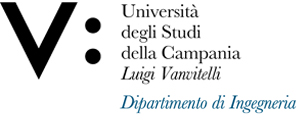Sara GONIZZI BARSANTI
Insegnamento di TECNICHE AVANZATE DELLA RAPPRESENTAZIONE
Corso di laurea magistrale in INGEGNERIA CIVILE
SSD: ICAR/17
CFU: 9,00
ORE PER UNITÀ DIDATTICA: 72,00
Periodo di Erogazione: Secondo Semestre
Italiano
| Lingua di insegnamento | ITALIANO |
| Contenuti | Si affronteranno questioni relative il ‘saper fare’. Gli studenti, oramai al termine del processo formativo, saranno invitati a sperimentare modalità d’interazione professionale per verificare le potenzialità del linguaggio digitale. |
| Testi di riferimento | Una “Guida” in itinere sarà resa disponibile nell'aula virtuale. |
| Obiettivi formativi | Il corso TAR è inteso come un laboratorio. Agli studenti sarà richiesto, fin dai primi incontri, di lavorare in classe. Gli argomenti trattati e applicati in classe dovranno essere consolidati e ampliati con lo studio individuale. |
| Prerequisiti | Conoscenze e abilità garantite nel settore con il rilascio del titolo di laurea triennale in ingegneria e più segnatamente competenze sulle tecniche di rappresentazione di base (strumenti metodi e procedure) che regolano l'esercizio pratico della grafica digitale e multimediale. |
| Metodologie didattiche | Il corso è inteso come laboratorio. Agli studenti sarà richiesto, sin dai primi incontri, di lavorare in aula. Gli argomenti trattati e parallelamente applicati dovranno essere approfonditi con studio individuale. |
| Metodi di valutazione | Sono previsti cicli di lavoro consecutivo. Tre prove intercorso accerteranno il raggiungimento degli obiettivi parziali. Nelle date stabilite gli allievi consegneranno gli elaborati concordati, frutto delle attività di laboratorio approfondite e sviluppate autonomamente. Ciascuna prova prevede l’esposizione di un sintetico PPT. Gli esiti permetteranno una valutazione in itinere. Per l’attribuzione dei crediti, sarà tuttavia necessario sostenere l’esame finale. Il colloquio verterà sull’esperienza formativa. durante l’esame ciascun studente sarà invitato a presentare il lavoro d’anno (stampa degli elaborati raccolti in un book) esposto nel corso del colloquio orale. Due domande approfondiranno la consapevolezza tecnico-scientifica. |
| Altre informazioni | Ricercatori interni seguiranno il coordinamento di gruppi di studio. Sono stati programmati seminari tenuti da esperti e docenti in mobilità Erasmus Plus. |
| Programma del corso | Le lezioni introduttive forniranno un'ampia panoramica delle possibilità offerte dalle attuali tecnologie digitali che supportano il lavoro degli ingegneri civili, strutturali e ambientali. La comunicazione e la gestione del progetto rimangono un tema di interesse centrale e il tema dell'anno, concordato con ogni studente, guiderà le attività pratiche di laboratorio in base ai loro interessi professionali. |
English
| Teaching language | Italian |
| Contents | Know-how' issues will be addressed. The students, now at the end of the education process, will be invited to experiment with professional interaction modes to test the potential of digital language. |
| Textbook and course materials | A ”Guide” will be made available in the virtual classroom. |
| Course objectives | The TAR course is intended as a laboratory. Students will be required, from the very first meetings, to work in the classroom. The topics dealt with and applied in class will need to be consolidated and expanded with individual study. |
| Prerequisites | Knowledge and skills in the sector attested to by a first cycle, three year, standard engineering degree in particular skills on basic representation techniques (tools, methods and procedures) that govern the practice of digital and multimedia graphics. |
| Teaching methods | The TAR course is intended as a laboratory. Students will be required, from the very first meetings, to work in the classroom. The topics dealt with and applied in class will need to be consolidated and expanded with individual study. |
| Evaluation methods | The course work is organized in consecutive cycles. Three progress tests will assess the achievement of partial objectives. At set dates, students will be required to deliver the set assignments that consist in the elaboration of the lab activities consolidated and enhanced with individual study. |
| Other information | Department researchers will coordinate the group work. Seminars held by experts and professors who have adhered to Erasmus Plus mobility programs have been scheduled. |
| Course Syllabus | The introductory lessons will provide a broad overview of the possibilities offered by the current digital technologies that support the work of civil, structural environmental engineers. The communication and management of the project remains a central issue of interest and the theme of the year, agreed upon with each studen, will guide the lab practice activities according to their professional/vocational interests. |








